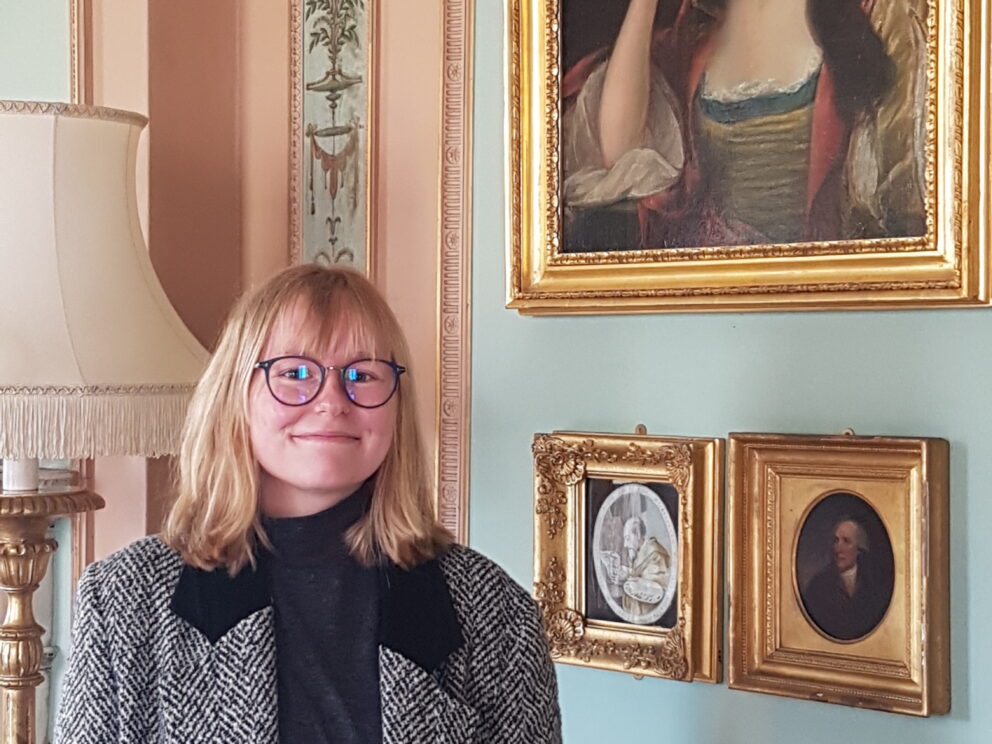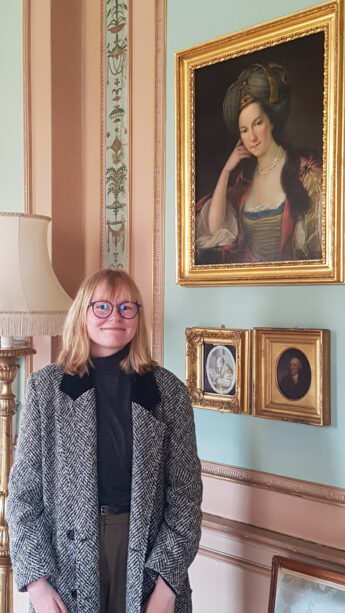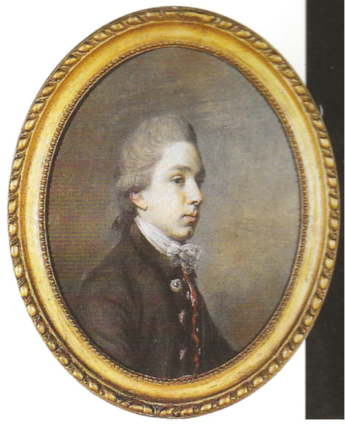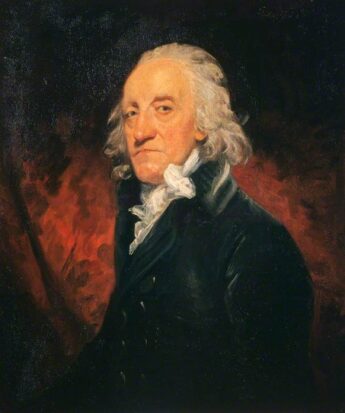Portraits of Patrick Home


Aurore Damoiseaux is a postgraduate student at the University of Glasgow in MLitt History of Art: Dress and Textile History. She holds a Masters of Arts in History of Art from the University of Aberdeen. Aurore is particularly interested in using garments as a way to find out about the everyday life of people in the eighteenth and nineteenth centuries, as well as the use of clothing as public representation of the personal identity of the wearer.
PATRICK HOME: DEMONSTRATING WEALTH
Patrick Home is a central figure in the history of Paxton House, he commissioned the house even though he never lived here. The house, built to showcase his wealth and status in society, hosts three portraits of Patrick Home made by Hugh Douglas Hamilton, Cosmo Alexander and Joshua Reynolds.

The pastel miniature by Hugh Douglas Hamilton was probably made in the 1760s, when this popular artist worked in London. Patrick Home is shown as a young man, wearing a dark coloured coat decorated with large buttons on the front, worn over a white linen shirt whose lace collar is visible. This was a sign of great wealth which would have been understood by contemporary viewers, as not only was it hard to create fine lace but it was even harder to keep white cloth white. It signified that the sitter owned more than one shirt and that he had domestics who did his laundry. His hair is put in the fashionable style of the time, with curls at the sides and a low ponytail. The clothing is nothing spectacular, but includes subtle symbols of his wealth.

The portrait by Cosmo Alexander was made in 1757, just before the construction of Paxton House started (1758-63). Patrick Home was establishing himself as a person of dignified wealth by commissioning the leading architects and artists of the day, with whom he lived in close proximity while he was in London. This painting might have been made to hang at Paxton House or at his London residence. In the painting, Patrick Home is seen wearing a black coat and tie with a white linen shirt whose lace collar and sleeves are visible. His hair is in the fashionable style of the mid-eighteenth century, styled with curls at the sides and tied at the back with a black ribbon. He is holding a medallion in his left hand, demonstrating his intelligence, education and wealth. This object may have formed part of a collection that could have been stored in the sixteenth-century Italian cabinet Patrick had purchased for Paxton House.
His hair is either powdered or is a wig; both would have been very fashionable at the time. In eighteenth-century England, hair was a signifier of social status, youth and beauty. Its ties to cleanliness and hygiene made it a display of health. Patrick Home’s close shave is also a marker of status; having a groomed face displayed health and a tie to the ideas of Enlightenment.

The portrait by Sir Joshua Reynolds, the leading portraitist of his day, painted in the 1780s, shows Patrick Home as MP for Berwickshire. He is again represented with the wealth signifier of the white linen collar. Over it, he is wearing a black coat with upturned lapels and collar, an early version of the frock of the nineteenth century. This coat would have most probably been worn over a waistcoat (called the ‘vest’ in the seventeenth century). The combination of the coat, the waistcoat and breeches (short, tight trousers reaching to below the knee) was the precursor to today’s three-piece suit. It was implemented as a style of dress by Charles II in the 1660s in an attempt to control men’s expenses in non-necessary items such as dress. Patrick Home’s subdued dark coat without unnecessary frills or embroidery, showcases his identity as an intellectual, interested in graver topics than fleeting fashions. His hair is no longer put together and tied in a fashionable way, instead, its untamed appearance echoes the fiery background to possibly inform the viewer of the sitter’s comparable character. The red background was a standard device to heighten emotion and drama and also acted as a signifier of wealth, as the fabric used was rather luxurious and expensive.
Taken from the research report by Aurore Damoiseaux, September 2021